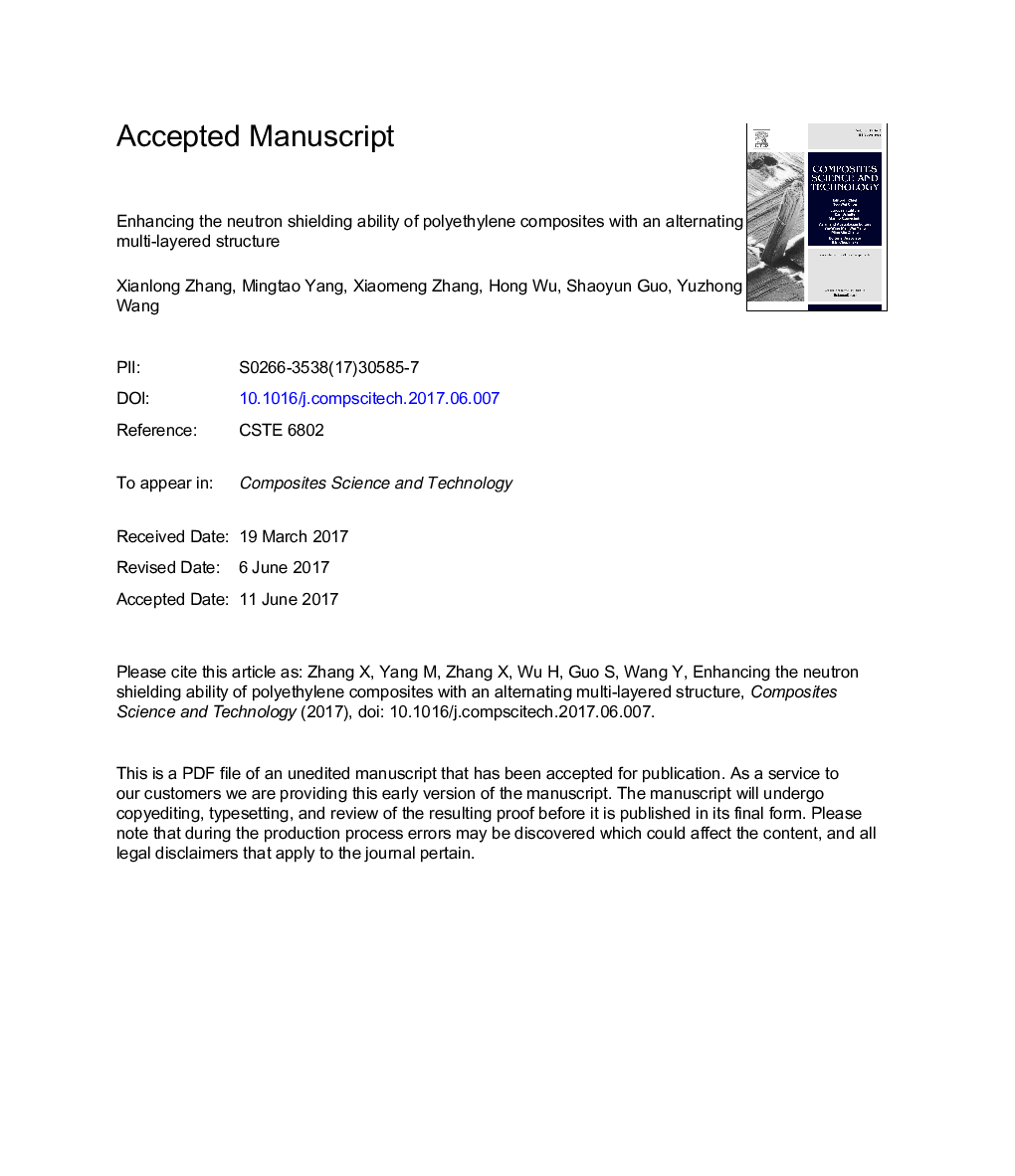| Article ID | Journal | Published Year | Pages | File Type |
|---|---|---|---|---|
| 5022005 | Composites Science and Technology | 2017 | 22 Pages |
Abstract
Neutron radiation is often encountered in a wide range of industries, such as aerospace, healthcare and nuclear power plants. It has been an arduous challenge to shield this neutron radiation to improve equipment safety and protect human health. In order to make an effective neutron shielding material, alternating multi-layered composites (high density polyethylene)/(high density polyethylene/boron nitride), (HDPE/(HDPE/BN)) and (HDPE/BN)/(HDPE/Barium sulfate (BaSO4)) were fabricated using a multi-layered co-extrusion system. The HDPE/BN layers in the alternating multilayered HDPE/(HDPE/BN) and (HDPE/BN)/(HDPE/BaSO4) composites had a continuous and layered distribution in their structure, with the BN particles oriented in the extrusion direction. The probability of collision between incident photons and flake-shaped particles is enhanced through alignment of the oriented BN particles. In this way, neutron transmittance noticeably decreased with an increasing number of layers. Compared to traditional polymer-blended materials, the alternating multilayered composites showed excellent shielding efficiency. In addition, the results of the dynamic rheological analysis showed that alternating multi-layered composites with more layers can weaken the cross-linking effects induced by secondary radiation. Furthermore, according to the Nano-TA analysis, BaSO4 was an effective shield of secondary radiation, so the average melting point, in nanoscale, can be represented as follows: (Nano-Tm¯) ((HDPE/BN)/(HDPE/BaSO4))> Nano-Tm¯ (HDPE/(HDPE/BN)).
Keywords
Related Topics
Physical Sciences and Engineering
Engineering
Engineering (General)
Authors
Xianlong Zhang, Mingtao Yang, Xiaomeng Zhang, Hong Wu, Shaoyun Guo, Yuzhong Wang,
